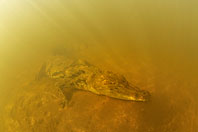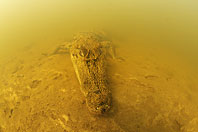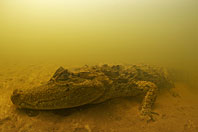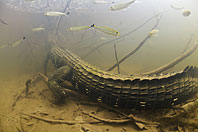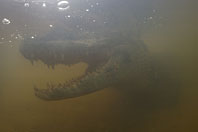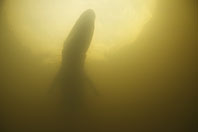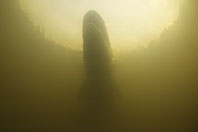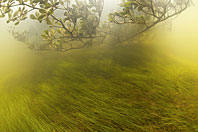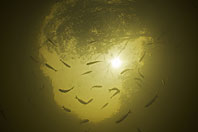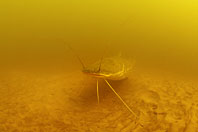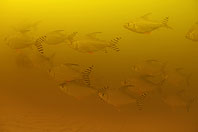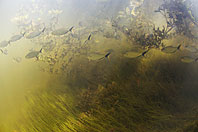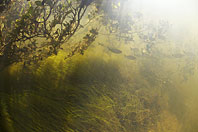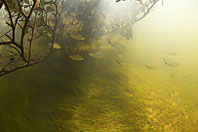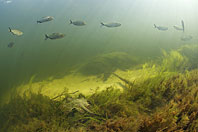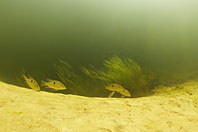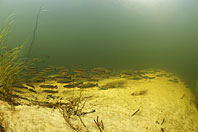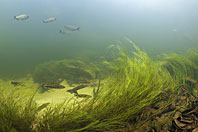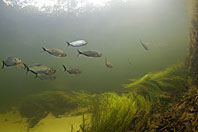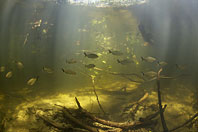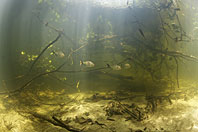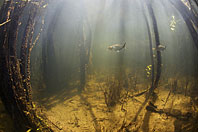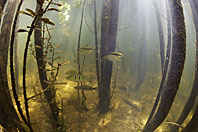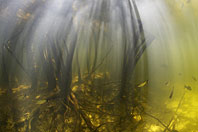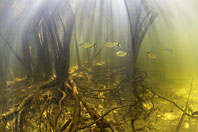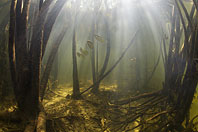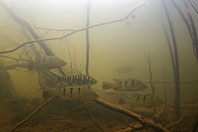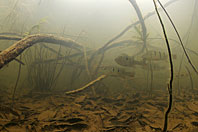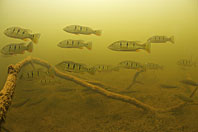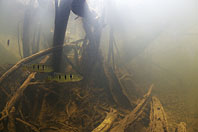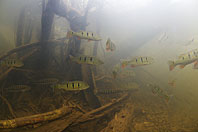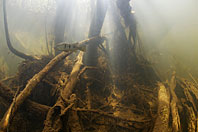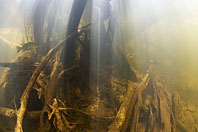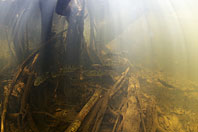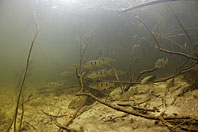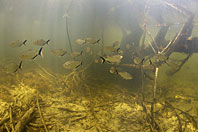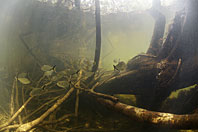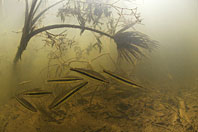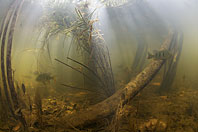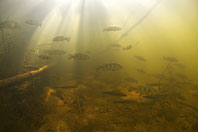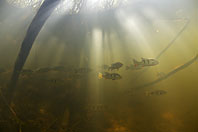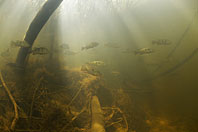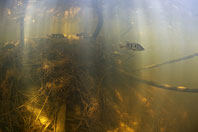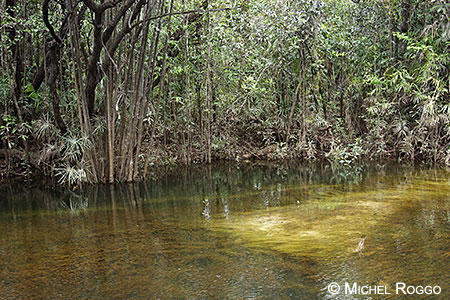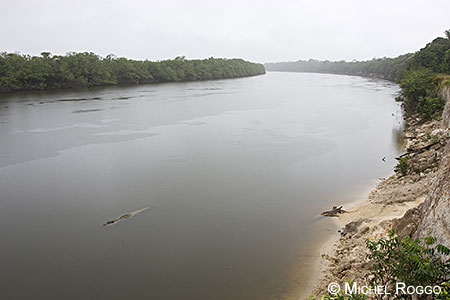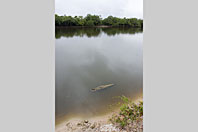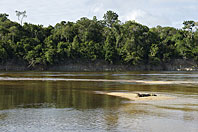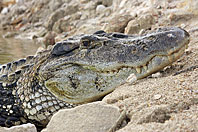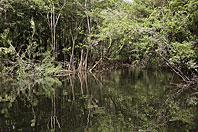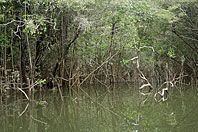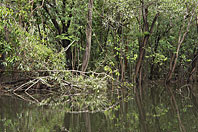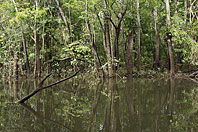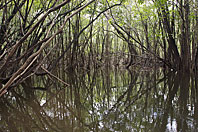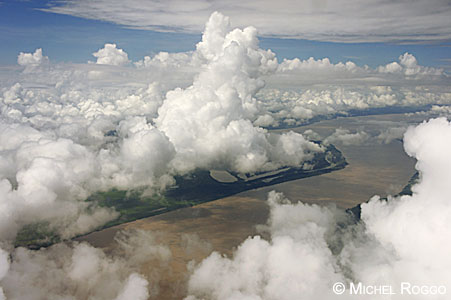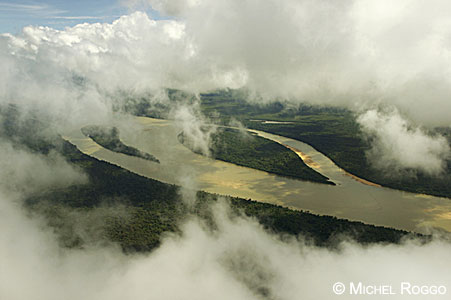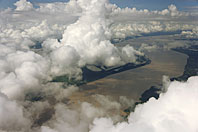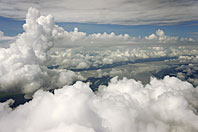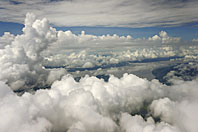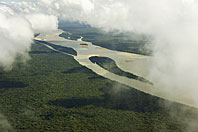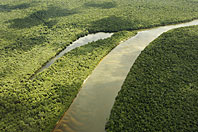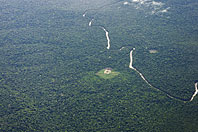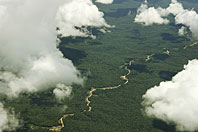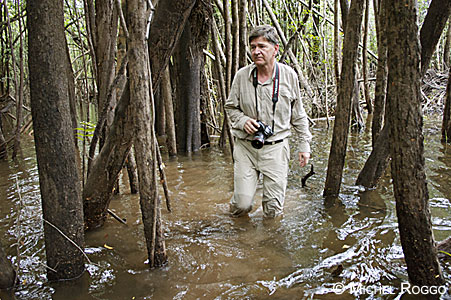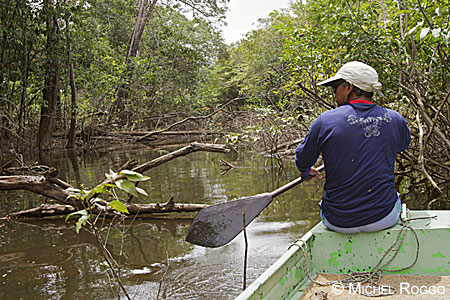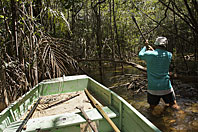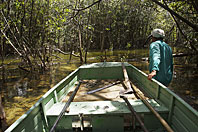| An Amazonian Igapó – Rio Água Boa do Univiní, Roraima, Brazil | |
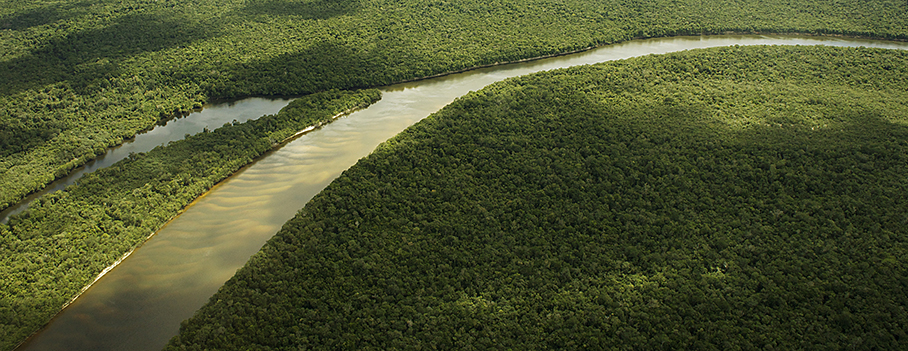 |
|
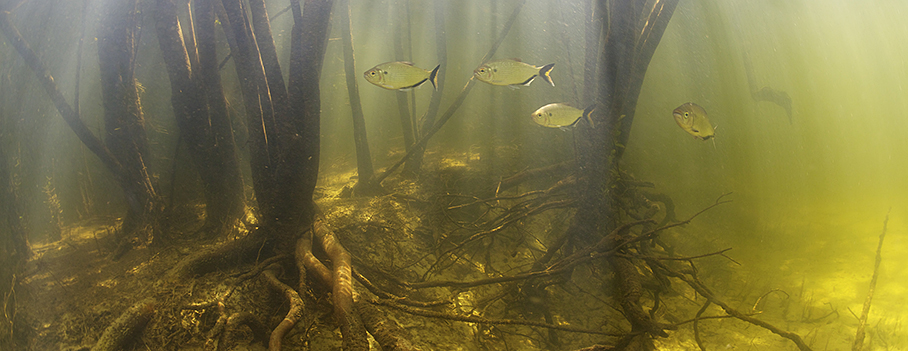 |
|
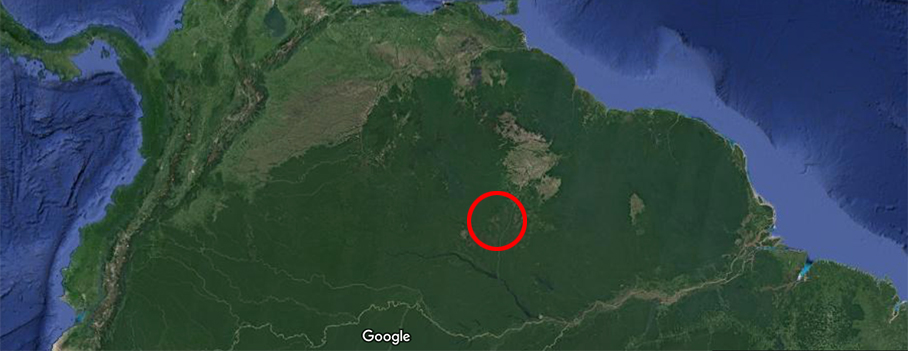 |
|
Igapó is a word used in Brazil for blackwater-flooded Amazonian forests. These forests are seasonally inundated with freshwater. They typically occur along the lower reaches of rivers and around freshwater lakes. Igapó is primarily characterized by seasonal inundation caused by abundant rainfall; in some areas, trees can be submerged for up to 6 months of the year. These forests may be able to sustain a large amount of bird, mammal, reptile, amphibian, fish and invertebrate species, however, biodiversity varies between wetland ecosystems and the species richness of the freshwater swamp forests is not entirely known.
Igapó forests are characterized by sandy acidic soils that have a low nutrient content. The color and acidity of the water is due to the acidic organic humic substances (e.g. tannins) that dissolve into the water. The acidity from the water translates into acidic soils. Igapó and other flooded forests typically display a lower diversity of plants than that seen in terra firme forests. Similar to other forests found throughout the tropics, it is common to observe only a few dominant tree species. Distribution of trees and other plants is highly dependent on inundation tolerances of species causing a non-random distribution of plants where more flood-tolerant species are found at lower elevations and less flood-tolerant species are found on higher ground. Tree species adapted to seasonal inundation have adapted to maximize fruit production during periods of flooding in order to take advantage of newly available seed dispersal methods. Fish consume nearly all fruit that fall into the water, and species that are unable to digest the seeds eventually excrete and disperse them into the water. Dispersal by other vectors such as birds and monkeys is secondary to that of fishes in igapó. An important factor in seed survival is the presence of seed predators. Fishes that lack the strong jaws found in characins, such as catfish, digest the fleshy material of the fruit while the seeds pass through the gut unharmed. Because many catfishes are bottom-feeders, they are critical dispersers for seeds that sink upon entering the water. Freshwater Ecoregion of the World : #314 Rio Negro |
Produced in 2011. Red dots  indicate personal favorites. indicate personal favorites. |
| Flooded Forest Underwater | |
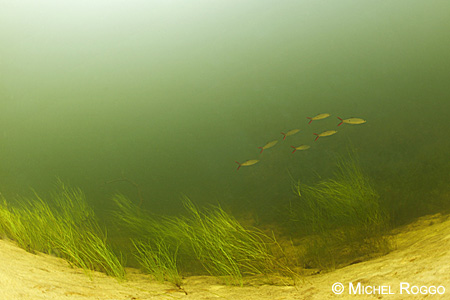 | 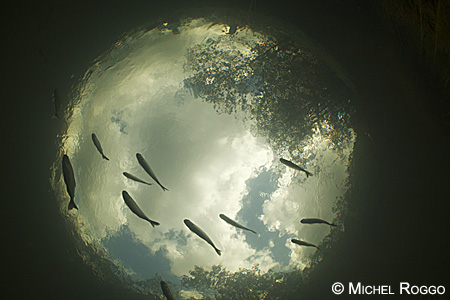 |
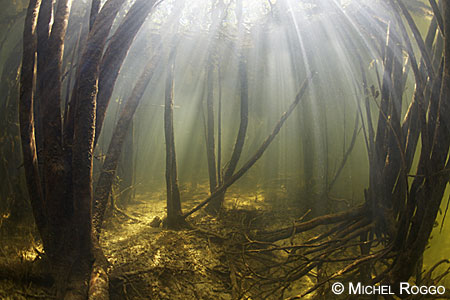 |
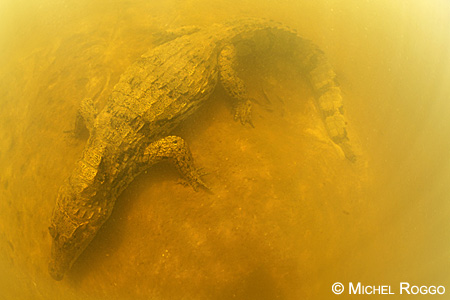 |
| Website Michel Roggo | Copyrights of all images, movies and other contents 2021 © Michel Roggo | The Freshwater Project Website | |
